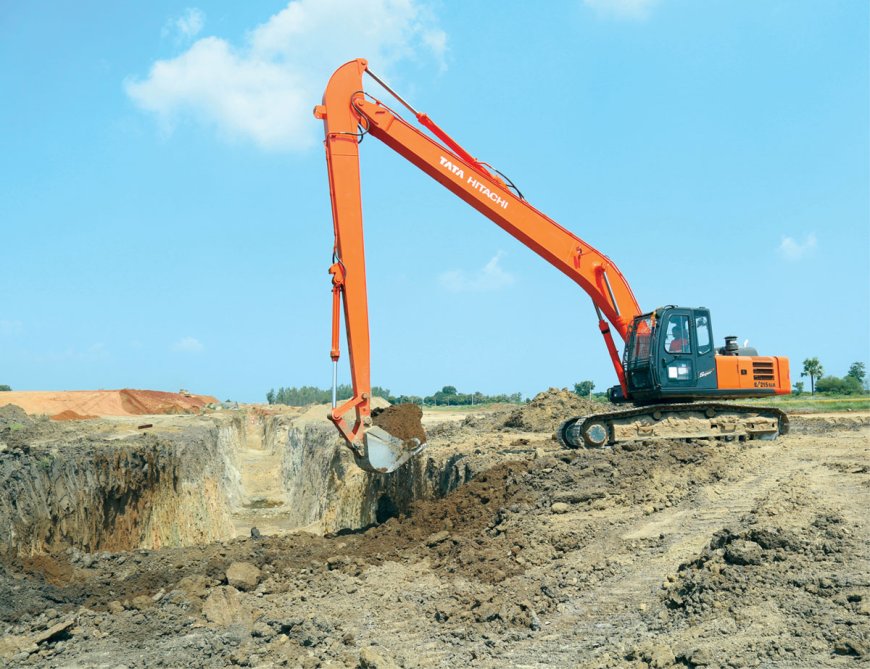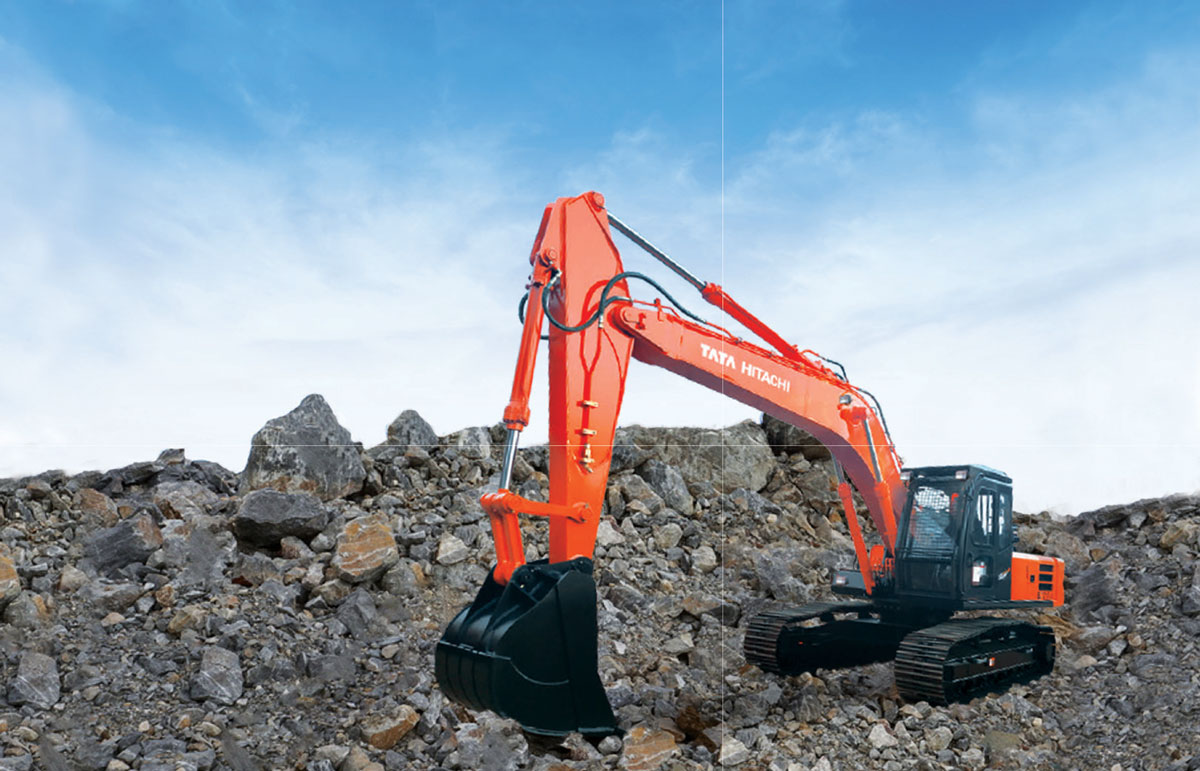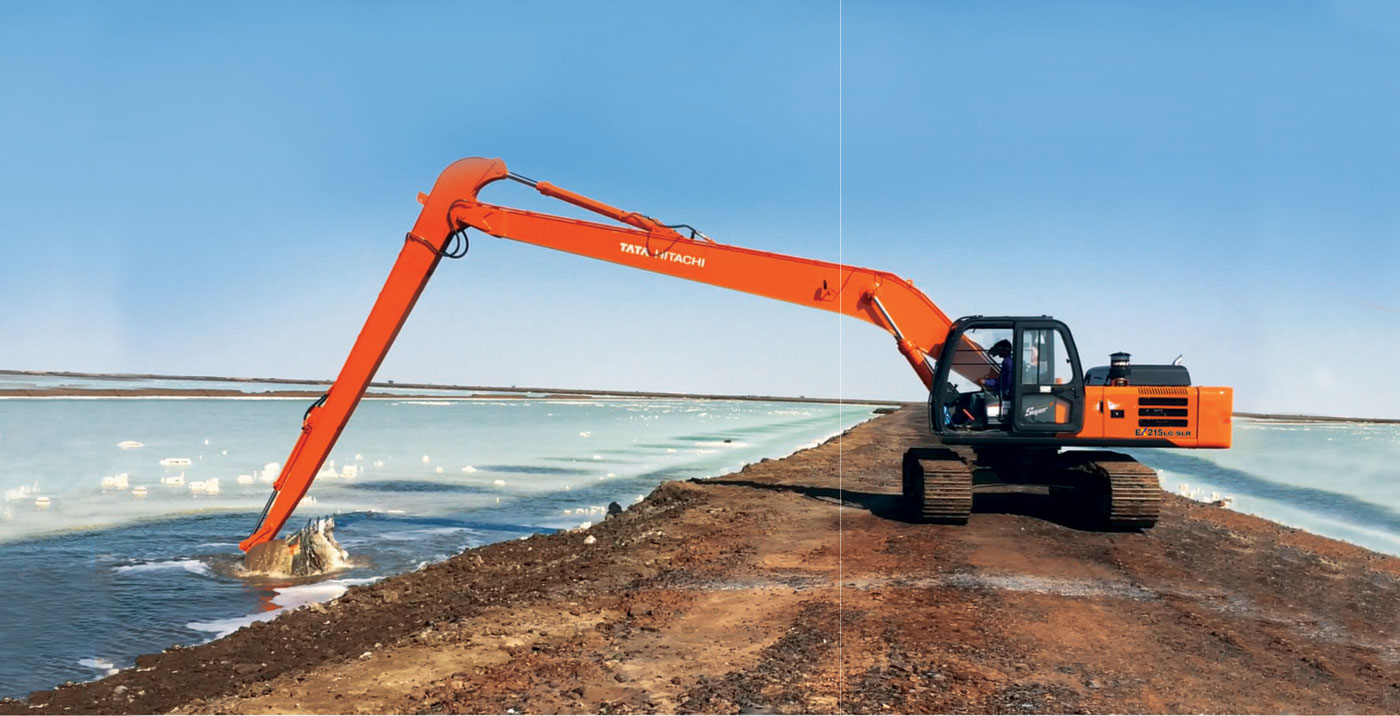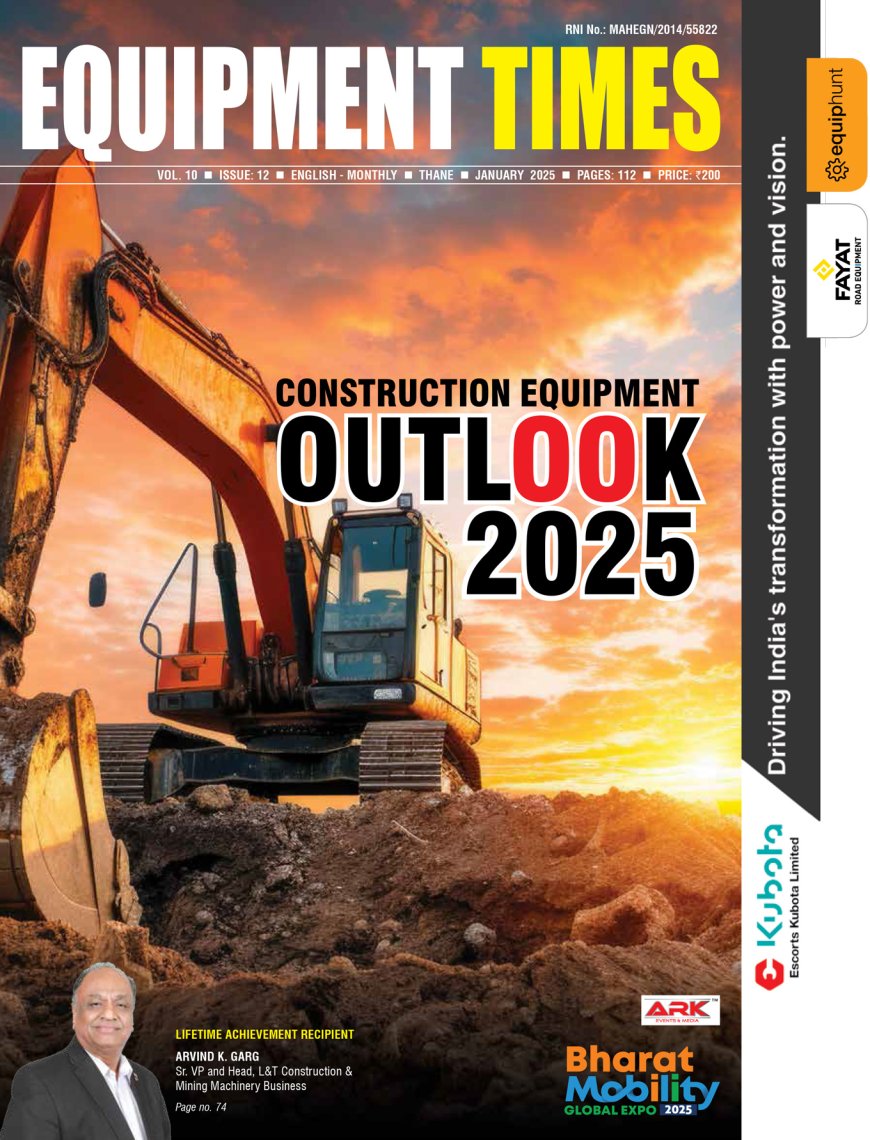Tata Hitachi is a pioneer in introducing the latest technologically advanced equipment in the Indian market
Road construction equipment industry is the backbone driving the Indian economy? Your comments. We must look at it from the context of CE industry – CE industry comes under manufacturing & services still form the backbone of the Indian economy.

Road construction equipment industry is the backbone driving the Indian economy? Your comments.
We must look at it from the context of CE industry – CE industry comes under manufacturing & services still form the backbone of the Indian economy. Having said that, yes road construction is the backbone of the CE industry. If you look at the investments announced in the Feb budget, nearly 60% of the demand originates from roads.
With exclusive emphasis on highways through accelerated highways development program by the government, how are OEMs utilising this opportunity to contribute towards the economic growth of the country?
This can be answered in two ways:
Direct:
As explained above road construction takes in a large amount of CE – excavators, BHL, WL, compactors, pavers, crushers, batching plants etc. Hence by manufacturing most of these here in the country (most of the voluminous products are manufactured here), we are adding to the growth of the economy as well as contributing to employment. Our machines are used in a wide range of applications & activities that help in building roads & highways for faster movement of people & material adding to the economy.
Indirectly:
Most of the equipment are now coming with cutting edge technologies that lead to faster execution as well as higher availability of machines at work site as well as proactive maintenance and an insight into how the machines are working. Contractors are fully aware of the progress & utilisation of machines.
Customer education programs are conducted to help them infer the data and take necessary initiatives to improve site efficiency and thereby profitability & add to the progress in the economy.
How has the Rs 20 lakh crore economic stimulus package to deal with the fallout of the Coronavirus pandemic affected OEMs?
So far as the 20L Crs stimulus is concerned, a large part of it has gone into sustaining people’s livelihood as well as support to MSMEs. Having said that, there are some focussed initiatives announced to improve liquidity among NBFCs. Therefore, this has helped NBFCs in having the money to lend. However, in spite of these measures, there is still extreme cautiousness among financers to lend to our customers due to the continued uncertainty around the pandemic. Also, there is a big focus on rural India in these measures – agriculture, MNREGA, rural housing etc. This appears to be driving the recent surge in demand for BHL. But we must see if it sustains for the rest of the year. However, we are yet to see meaningful recovery in other segments of the CE market.
What are your views on the Ministry of Road Transport and Highways (MoRTH) considering to defer implementation of BS-IV emission norms for construction equipment vehicles?
This is welcome & has been our request to the ministry. We OEMs were preparing for the implementation of BSIV CEV from 1st Oct onwards before COVID-19 hit us with disruptions in supply chain as well stopped activities during the lockdown. A lot of activities pertaining to getting machines ready got impacted for 2 months and second round effects of these disruptions continue to have effect.
Testing activities also got impacted. Hence the whole momentum that was built up got lost & will take time to build up given the continued uncertainty. Hence the extension will allow the CE industry to have a smooth transition to BSIV norms.
Labor movement and supply chain disruption was considered a major hindrance to project execution? What steps have you taken to overcome these challenges? (This question is appropriate for road contractors; hence response is from what CE industry did)
Construction activities in major projects were allowed from 20th Apr & activities started at most of the large national highway projects. Further a large number of labourers at most sites have returned to their native places & customers have to make do with whoever is available & if there are no operators / mechanics – they are unable to execute the projects.
Free movement of goods, especially cement has picked up only recently – as it was most affected due to the lockdown. Hence the construction industry is very cautious & sees the normalcy coming back only after monsoons. As far as production is concerned, we can manage with the current inventory and as demand itself is low, there are no issues and we are prepared to ramp up as per the demand.
Most of our dealer outlets have resumed operation & we were also providing service using digital means during & after the lockdown, helping customers maintain operations. Our support team is available at our FMC sites keeping the machines fully functional & we continue to use both the digital as well as our physical network to support our customers.
Our sales teams were continuously engaged with customers to apprise them of our offerings and how this aid their business going ahead. We even conducted webinars to counsel & install confidence in them in these uncertain times & spread the positive word around the opportunities in infrastructure in the country as well as in their area of operation.
As construction activities have resumed, what initiatives have OEMs taken to speed up projects?
Even before COVID19, we have been selling most of our products with digital capabilities.
These telematics products have enabled continuous communication with our customers.
Under the current circumstances we believe customers will greatly appreciate these digital technologies to get the best out of their equipment.
As far as production is concerned, we have inventory & as demand itself is low, there are no issues & we are prepared to ramp up as per the demand. Further as explained above, most of our dealer outlets have resumed operation & we were also providing service using digital means during & after the lockdown, helping customers maintain operations. We continue to use both the digital as well as our physical network to support our customers.
Industry is working closely with financiers to see that our customers get access to low cost finance. Our sales teams were continuously engaged with customers to apprise them of our offerings and how this aid their business going ahead.
Are you experiencing a decline or increase in demand for a particular road equipment in the wake of the ongoing pandemic? How is it impacting the business prospects and project execution?
Across the board demand is down, except for BHL – as was explained earlier – given its use in rural areas. Demand improved in June but is still almost half of what it was last year for the month. We do observe that compactors did better in June & were down only around 10% indicating a recovery in road construction as envisaged.
What kind of support do you expect from the government to boost the road equipment sector in the country?
Accelerated implementation of the projects announced in the National Infrastructure Plan (NIP). Ensuring flow of payments and debottlenecking other commercial issues with Contracting Companies to ensure that they are back in the buying cycle. Financial support to the MSME sector (our component vendors) so that continuity of operations is assured. Creating an environment where the NBFC can support our Industry.
Tell us about the key developments in the road equipment sector?
In this direction, Tata Hitachi is a pioneer in introducing the latest technologically advanced equipment in the Indian market. Tata Hitachi has the EX Super+ of excavators and ZAXIS GI series of excavators where features like online access to location of equipment, online health monitoring system, etc. have been included apart from several other improvements.
Hitachi has been a pioneer in developing hydraulic technology used in excavators &Zaxis GI excavators have their HIOS III system. These use regenerative hydraulics that reutilizes the returning pressurized flow through a regenerative circuit and channelizes this to areas with high demand of oil. This helps to deliver greater flow to circuits that are performance intensive without spending more power. This improves the productivity of the machines without incurring additional fuel expenses.
In addition to this, ConSite is available in our Zaxis GI series excavators &InSite in EX Super+ series excavators: a next-generation service solution that utilizes Information Communication Technology (ICT). These:
- Deliver monthly reports to customers
- Provide both summary reports that give an overview of the operation of all the fleet owner’s machines
- Detailed reports that show information about individual machines.
Further ConSite also has remote fleet management system with our Global e – Service offering.
- Allows the customer easy access to operating information real time to increase machine productivity and reduce downtime.
- Is a convenient and simple system which has been designed to give customers valuable information regarding the operations, maintenance, system parameters and alarms of their machines from the convenience of their offices.
- Alarms are also reported to our support team who get into action to resolve proactively.
- Lead to higher availability of machines at work site as well as proactive maintenance and an insight into how the machines are working
- Contractors are fully aware of the progress &utilisation of machines.
Given the multiple modes of operation on the machines, it can be used for precision work or mass & faster excavation, as the case maybe, with regards to the road construction job site.
- Tata Hitachi’s TL340H wheel loader is designed with efficiency at its core, apart from its Hydrostatic technology – as against most competition players offers traditional hydrodynamic technology – is equipped with a variable displacement pump to further its fuel savings advantage.
- To provide customers a real time status of the machine, TL340H is also equipped with Insite.
In your view, is the infrastructure development in the country conducive for future growth?
The government has announced the National Infrastructure Pipeline (NIP) outlining its plans over the next 5 years till 2025. It’s a detailed approach to investment in infrastructure & discounting the current difficulties being faced by the industry, the long-term growth prospects are positive.
Could you tell us about the different schemes initiated by the government to boost the construction activities in the country?
Again, if you look at the NIP a big part of the investment – nearly 20%-is in roads & highways. Under this comes:
- National Highway& expressway development under Bharatmala
- PMGSY
- State highways & district roads development programmes
- Various irrigations projects undertaken by the states as well as PMKSY
- Jal Jeevan mission to ensure water in all homes
- Airport & metro projects across the country
- Railway capacity augmentation, Dedicated freight corridors, station redevelopment & electrification by 2023.
- PMAY for affordable housing
These are some of the different schemes initiated by the government to boost the construction activities.
What are your future projections for the Indian road equipment sector?
Clearly 1st quarter was deeply impacted, 2nd quarter is monsoons & we will have a better view of the pandemic situation. Hence any recovery is expected in the 2nd half of the year. Given the above conditions we expect the market could shrink further by 20-30% over FY19-20. As the government has reiterated, India will be a land of opportunities & the NIP confirms the same. It’s just a matter of time before investment in infrastructure accelerates rapidly to meet the needs of its citizens. Therefore, we are bullish from next year onwards.

– Sandeep Singh
Managing Director, Tata Hitachi Construction Machinery Company Private Limited


Hits: 292










